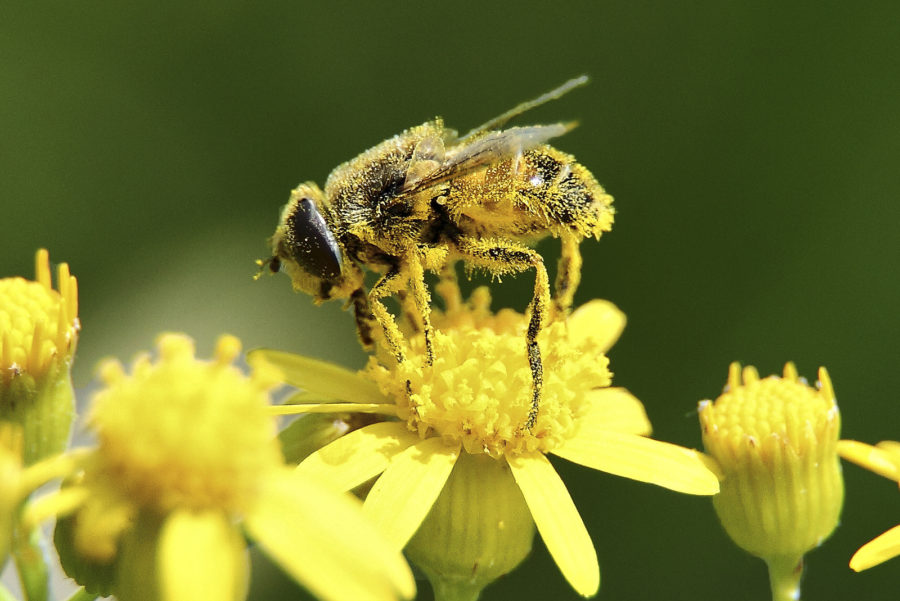The most widely-used insecticide in the world is a compound called imidacloprid. Along with some other best-selling pesticides, it is a member of the neonicotinoid chemical class known as “neonics,” that are used in the Northwest on such staple crops as potatoes, apples and other tree fruits, grapes, and wheat. Neonics have a big problem though: they may well be connected to the precipitous decline in bee populations.
Neonics are chemical cousins of nicotine but they are marketed by the pesticide industry as a milder alternative to highly toxic organophosphate insecticides, which are especially dangerous for children. The problem is that the US Environmental Protection Agency (EPA) gave “conditional” approval for neonics without doing adequate research on consequences for non-target species, including “beneficial insects,” such as bees.
Many cities and countries around the world have grown alarmed at plummeting bee populations, and a growing body of research seems to indicate that neonics are a culprit. In fact, the European Union (EU), Canada, and other governments have scaled back or stopped using neonics as a result. The US Environmental Protection Agency (EPA) has taken only small steps, and belated ones, to protect American consumers and ecosystems.
The EPA first approved imidacloprid for use as a pesticide in 1994 and allowed the first use on food in 2005. In 2013, the agency updated its instructions for pesticides containing neonics to restrict its use where bees may be present. Since then, the use of imidacloprid and other neonics in the US has dropped. In January 2016, the agency finally acknowledged the emerging scientific research showing that imidacloprid could harm bees as a “non-target” species, a sort of collateral damage from agriculture’s chemical warfare against pests. Yet, the chemicals are still in wide use while the EPA aims to complete its review of neonics by the end of 2019.

Other countries have taken a more cautious approach. When the European Union sets protective standards for food, it follows the “precautionary principle”—when scientific data are insufficient for a final decision, the EU may seek more complete data before allowing widespread use. Accordingly, in 2013 it restricted the use of the three top-selling neonics—imidacloprid, thiamethoxam, and clothianidin—pending further evaluation. Then in May 2018, the EU banned outdoor uses of all three chemicals (although member states may request emergency exemptions).
In 2018, Canada proposed to phase out the same three neonics over the next three to five years. Vancouver, BC, banned neonic use within the city in 2016.
The fight against neonics in the US may be moving to the courts. Several organizations have petitioned or sued the EPA to take more protective actions. The Natural Resources Defense Council (NRDC) filed some of the more recent actions, petitioning the agency in 2014 to complete an administrative review within one year, and then suing the agency in October 2017 for approving neonics without first considering harm to endangered species. (NRDC invites citizens to sign a letter to the EPA requesting a neonic ban.)
In the absence of protective regulation from federal agencies, the best strategy for Northwest communities will be taking state or local action. Some US cities and counties restrict neonic use on their own property, but most local governments are actually prohibited from regulating pesticide applications more widely. In the Northwest, these “Pollinator Protection” leadership cities include Skagway, Alaska, plus Portland, Seattle, Spokane, and some smaller communities. Yet there are currently no statewide prohibitions against neonics. In fact, Oregon actually prevents local governments from banning or restricting pesticides in their communities (although they can restrict use on their own public property). So for those worried about the harmful impacts of neonics—for the pollinators we depend on for our food or simply for ourselves—there’s plenty of work to do right here in the Northwest.
John Abbotts is Sightline research consultant.


Comments are closed.